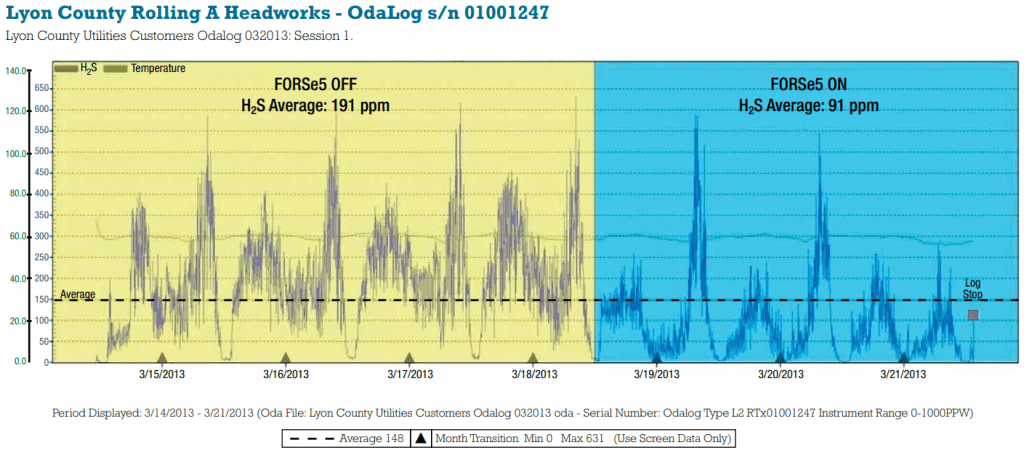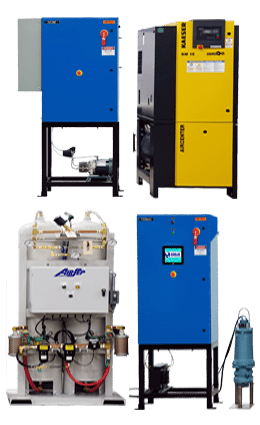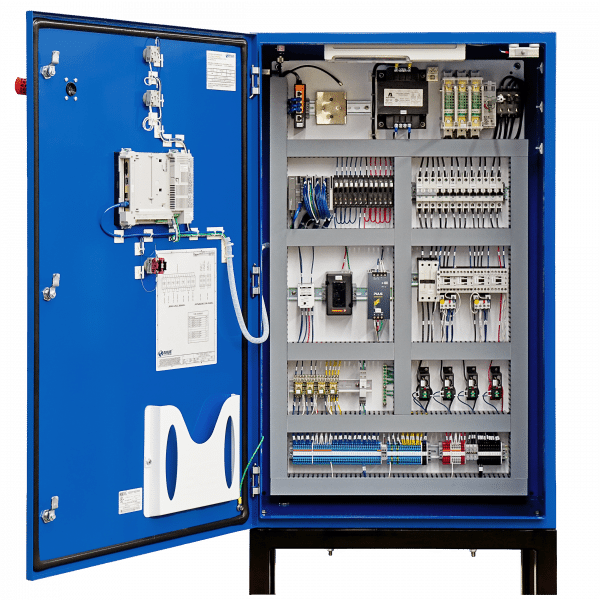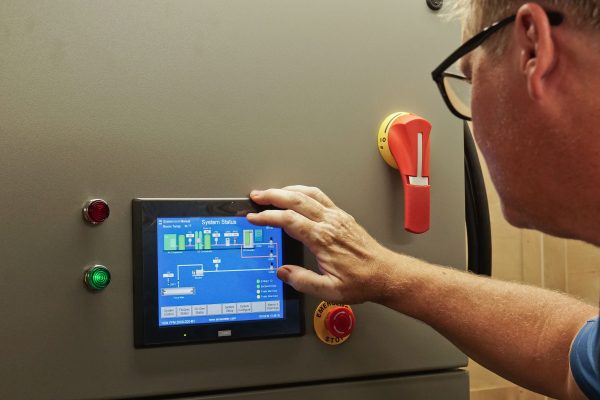Description
Nevada Bets on FORSe 5 to Solve Odor Problem and Wins!
Innovative wastewater treatment system lowers hydrogen sulfide discharge
The following lift station odor control system case study was published in Treatment Plant Operator (TPO) magazine.
Lift Station Odor Control System Project at a Glance
Location: Lyon County, Nevada
Site: 3A Lift Station Force Main and Plant Headwork (Dayton, Nevada)
System Size: FFM-350-150-M1
- Compressor: Kaeser SK20, max. 88 cfm @125 psi
- Oxygen Generator: AirSep AS-G, max. 150 LPM @65 psi
- Ozone Generator: Primozone GM12, max. 600 g/hr
- Chiller: Lauder Untracool 7.1 kW
At the 3A Lift Station Force Main and Plant Headworks in Dayton, Nevada, officials from the Lyon County Utilities Department discovered high sulfide levels present and desired to find a solution. Hydrogen sulfide can lead to odor and corrosion within a water system, so it was highly important that the county find an answer that is both effective and limits ongoing costs. To tackle this issue, Anue Water Technologies (AWT) demonstrated its FORSe 5 system for control of corrosion and odor in treatment of the force main.
Pilot Testing Lift Station Odor Control System
A 2-mile force main was expressing high concentrations of H2S, with peaks of 3400 parts per million and averages of 340 parts per million at its outfall.
A FORSe 5 pilot was installed with an output of 120 grams per hour of ozone water treatment and 40 liters per minute of oxygen water treatment. Prior to the commissioning of the pilot, total sulfides were measured at a whopping 17 milligrams per liter. After just five days of FORSe 5 operation, these values were reduced to 0.2 milligrams per liter, a 99 percent reduction. Even more, the vapor phase measurements showed similar results, where H2S levels were ultimately driven from over 3400 to less than 10 parts per million.
Under extreme temperature conditions with daily ambient temperatures exceeding 110 degrees Fahrenheit (43.3 degrees Celsius) and high levels of H2S, Anue’s FORSe 5 system for control of corrosion and odor achieved significant levels of control in less than one week.
Further improvement occurred when the city closes the ARV. The H2S level drop from 95 average to 11 parts per million.
Force Main Specifications:
- Force Main (FM) Length: 8,150 feet
- FM Diameter: 12 inches
- Average FM Flow: 300,000 gallon per day
- Pressure: 12 psi (dynamic)
Treatment Goal:
- H2S (vapor phase) weekly average ≤ 50 parts per million
- DO ≥ 1mg/L
Demo:
- The H2S average at the discharge point without a running demo unit is 191 parts per million.
- After installing the demo unit (O3 – 690 g/hr, O2– 152 LPM), the average dropped to 91 parts per million within the first three days.

Lift Station Odor Control System Performance
The wastewater treatment system completed its installation on May 1, 2014. With the resident pump off, the measured dosing of O2 was only 100 liters per minute. With the resident pump on, the dosing O2 continued at 100 liters per minute with O2+O3 at 40 liters per minute at 250 gallons per hour. The performance was charted at a constant H2S average of 15 parts per million from May 24 to June 11 of that year.
To ensure that the result is based on Anue’s FORSe5 system, Lyon County monitored the H2S reading during the power outage in February 2015. The average H2S level before the power shut off was 11 parts per million. After the power shut off, the H2S gradually increased, with a peak measured at about 770 parts per million on February 9 of that year. The average from February 7 to February 9 was about 150 to 190 parts per million. With the power resumed on the evening of February 9, the H2S level dropped almost immediately and remain the average of 15 parts per million after one day.

Conclusion
The operators were very pleased to find that Anue Water Technologies’ FORSe water treatment system’s performance meets H2S target goal of less than 50 parts per million at the discharge location, and the direct injection method performs well with gravity line and low pressure profile force main. Also, closing some of the ARV(s) improved system performance and further reduced the H2S level in the force main and at the discharge location.
A real boon to the process was showing that the effect of the dosage requires fewer than 24 hours to see a result at 3A Lift Station Force Main and Plant Headwork. Today, operators report that the system performs with no fault after one year with only routine lift station maintenance recommended by manufacturers required to keep the system running.
To learn more about Anue Water Technologies work in lift station odor control system, wastewater treatment service, and more, contact us today!







